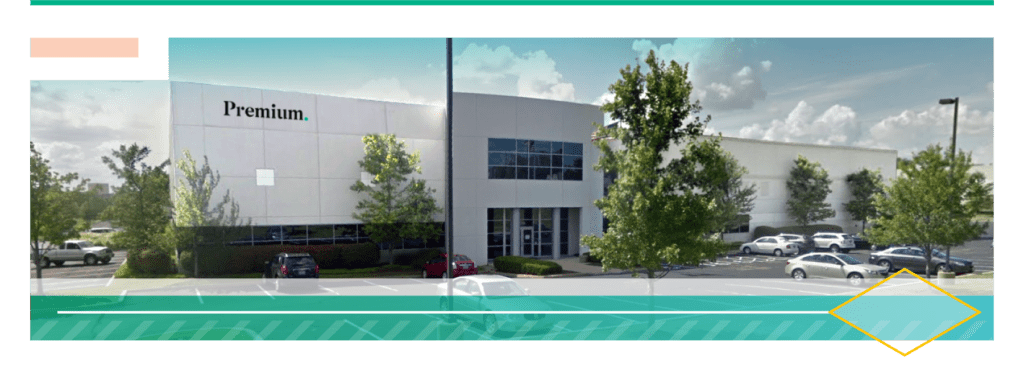Recycling retail displays.

At a time when shoppers demand corporate transparency and social responsibility from their favorite brands, Premium provides an answer to a commonly asked question: “What happens to old assets and fixtures when they’re removed from retail stores?”
It’s a topic that comes up routinely during category resets, new product introductions, and store remodels or transformations. And it’s easy to underestimate the sheer volume and environmental impact of assets when they are dispersed in stores nationwide.
When a brand or retailer refreshes its displays or technology, Premium loves the opportunity to facilitate recycling or upcycling efforts. Our expertise in this area evolved organically from client requests to retire outdated assets. The idea of simply discarding the material to landfills left our team uncomfortable.
Premium’s commitment to integrity and eclipsing expectations.
Generally, the same Premium team that initially installed the display returns to the store to remove it. Depending on the level of complexity, Premium’s Level 2 merchandising team is called in to assist. Premium reps collaborate with retail associates at each store to prep the display for outbound shipping to Premium’s National Logistics and Distribution Center (NLDC) in St. Louis, Missouri.

Our 2019 expansion to a new 130K+ square-foot facility increased our on-site storage capacity by 500% and enabled increased sustainability. Recently, we received more than 700 displays, each within a wooden crate the size of a Smart car. We dismantled the displays, technology and containers down to their raw materials to move the various components back up the supply chain.

We can accommodate a range of recycling projects, having established local partnerships with R2 (Responsible Recycling) and RIOS (Recycling Industry Operating Standard) certified facilities.
Steel parts are cut into smaller pieces and melted down for use in creating new displays, appliances, or cars. Any glass components go straight to the glass recycling plant, as glass is one of the easiest materials to recycle without much travel. We also recycle all the cardboard, compressing it into 750-pound bales before sending it to a local cardboard recycling plant for reuse.
We break down electronic displays, separating processors, cables, cords, monitors and mice for the e-waste processing plant which will shred and recycle the various elements. We disassemble wood shelves, shipping crates, and pallets, removing and recycling nails and screws as we go. Ultimately, all unusable wood is shredded and turned into mulch for use locally.

Reducing bulk is essential for efficient freight transportation. Polystyrene, commonly called Styrofoam, is put into a shredder for reuse as loose packing in future shipments or is compressed into dense bricks. Manufacturers utilize these bricks to create recycled goods you can find back at retail.
We especially love to repurpose assets creatively. Reusing is always the best option as it leverages the energy and materials needed to make the original product. For a recent project, we donated 700 sheets of plywood to local organizations. A portion will be used to create an interactive maze for kids and to shelter a community art project in downtown St. Louis.
After a client’s display was recently retired to accommodate a new product launch, Premium donated 70 computers and monitors to Best Buy Teen Tech Centers and other educational non-profits around the country as a part of the display recycling process.

What can you do?
Our actions support retailers’ efforts to help mitigate waste from retail stores. Still, these programs alone will not solve the monumental task of striving for sustainability within retail shopping. There are some easy actions you can implement today whether you are reading as an individual consumer or a corporate employee with the authority to impact sustainability decision-making.
Reduce. Reuse. Recycle.
Many brands have introduced product packaging made from recovered or recycled materials. However, if we don’t properly recycle, it likely still ends up in a landfill. If you aren’t already, make it a routine at work, home and on the go to recycle the bottles, cans, jars, cartons or boxes from all those CPG products we know and love. Rinse containers, crush cans, break down boxes, and put caps back on before tossing in the bin. Empty aerosol cans are even recyclable.
Use reusable bags.
On your next trip to Walmart, Target or local grocery store, drop off your used plastic bags at the in-store recycling kiosk. Better yet, keep a collection of sustainable bags in your car so you have easy access for your next grocery run. Target offers a 5-cent discount for every reusable bag you use.
Discard electronics the right way.
Best Buy’s robust electronics, appliance and fitness equipment recycling program has collected and responsibly disposed of more than 1 billion pounds of e-waste (electronics and appliances), making them the largest retail collection program in the U.S.
Identify wellness icons.
Support Target’s efforts to introduce a chemical strategy addressing the entire value chain, operations and every product sold. From beauty, baby care, personal care and household cleaning product categories, Target’s Wellness Icons help shoppers quickly identify environmentally conscious products on shelves and online.
Support sustainable brands.
Give kudos to brands participating in new concepts like Loop, a circular shopping platform developed by recycling company TerraCycle alongside Kroger and Walgreens. TerraCycle partners with major CPGs, retailers and manufacturers to divert millions of pounds of waste from landfills and incinerators each month.
—
We all need to be pushing sustainable practices forward. Reach out if you’d like to discuss what opportunities you have to divert your retail assets from landfills.
